The Sherman 75mm v Tiger 1 88mm
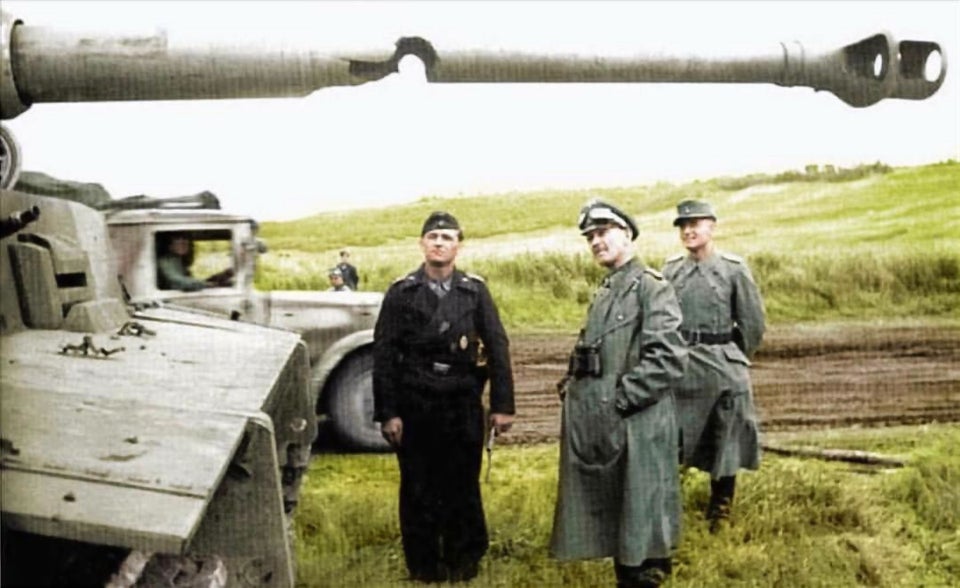
Two of the most discussed large calibre guns from World War Two are the Sherman tank’s 75 mm M3 gun, and the Tiger 1’s 88 mm KwK 36.
Stories are told about how Shermans rounds would simply bounce off Tigers, while the Tiger could knock out columns of tanks in a matter of minutes. But was this really true?
These guns were designed for different tasks and performance, but how different are they in the anti-armour role?
Both weapons were derived from an older gun with a different role to what they ended up as.
The 75 mm M3’s roots started in the French canon de 75 modele 1897. During World War I this gun was used by many nations, including American forces in artillery batteries.
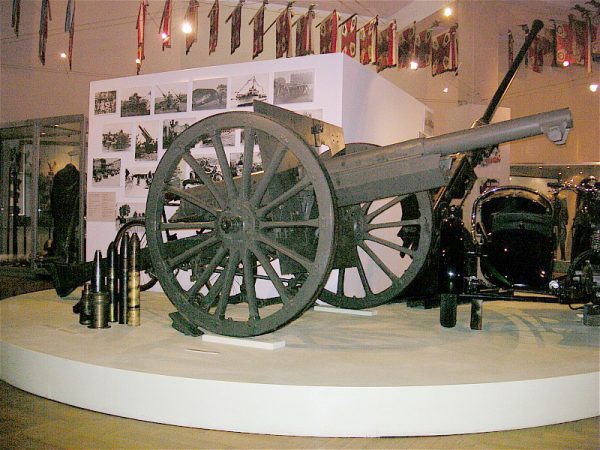
It had a high rate of fire due to it’s hydro-pneumatic recoil mechanism that kept it stable after firing, an advanced design for the time.
The M3 was an improved version of the M2 gun, itself based on the 1897 French field gun. It was used on the M3 Lee. The M3 gun had a longer barrel than the M2, from 31 calibres, to 40 calibres.
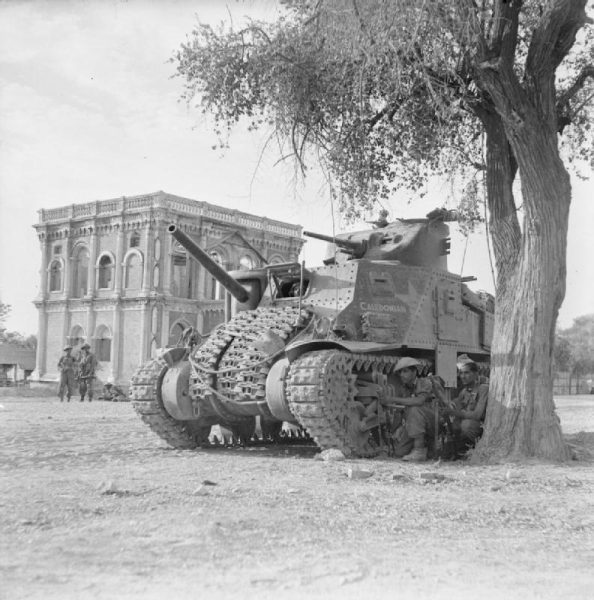
Calibres in length are a ratio of how many times the diameter of the inner barrel fits into the overall length of the barrel. For example, a 100 mm gun that is 5500 mm long would be 55 calibres long, usually written as: 100 mm L/55.
A longer barrel gives the burnt propellant more time to push the round along the barrel and increase its speed. A faster round has less time in flight for external forces like wind and gravity to affect it, increasing it’s practical accuracy.
The M3’s armour piercing rounds, the M61 APCBC (armour piercing capped ballistic capped) were, contrary to popular belief, reasonably effective. Although they still paled against the 88 mm’s anti-armour performance.
The 88 mm KwK 36 in the Tiger 1 was, like the M3 gun, inspired by a previous design. In the 88 mm’s case, it was the Flak 36 anti aircraft gun. ‘Flak’ is short for flugabwehrkanone, meaning ‘aircraft-defense cannon’.
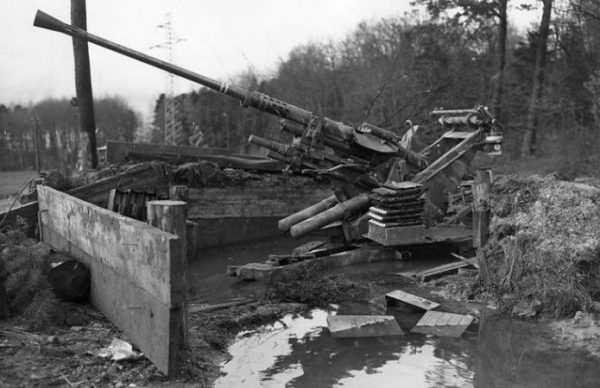
This gun required extreme shell velocity to reach the high altitudes some aircraft flew at. In the Spanish Civil War, German forces discovered that if this gun was pointed horizontally at targets on the ground, its high velocity had devastating effects on armoured vehicles.
Recognising this, a version was created that could be used inside an armoured fighting vehicle; the KwK 36. KwK means kampfwagenkanone or; ‘fighting vehicle cannon’.
It’s main change being the addition of a double baffle muzzle break, to reduce the distance the gun would recoil within the vehicle.
This fearsome weapon struck fear in allied tankers, who knew no part of their vehicle was safe from it.
On the Eastern Front, German 50 mm and 75 mm guns were unable to effectively penetrate tanks like the KV-1 even at close ranges, but the 88 mm gun could punch a hole in them from over 1500 metres away.
While the M3 was a multi-purpose gun, the KwK 36 was a dedicated tank killer, and it’s performance reflects this.
Compared to the M3’s 75 mm L/40 barrel, the KwK 36 had a 88 mm L/56 barrel. As can be seen, it was significantly longer than the M3 and allowed for higher shell velocity. It’s PzGr.40 armour piercing composite rigid (APCR) rounds travelled 930 m/s, and were extremely accurate. Much faster than the 618 m/s of the M61 round.
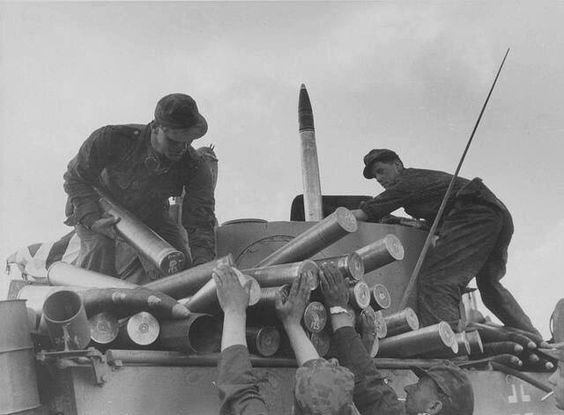
The PzGr.40 APCR round weighed 12.5 kgs, versus only 9 kgs of the M3’s M61 round, and was 86 cm long, while the M61 was 66 cm long. Most of this extra length came from the large propellant case that provided the round with its extremely high velocity.
These physical differences meant the 88 mm completely outclassed the 75 mm in the anti tank role.
It’s PzGr.40 round could penetrate 156 mm of armour at 500 m, 138 mm at 1000 m, and 110 mm at 2000 m. The M3 with it’s M61 round could penetrate 61 mm at 450 m, 55mm at 914 m and 45 mm at 1828 m.
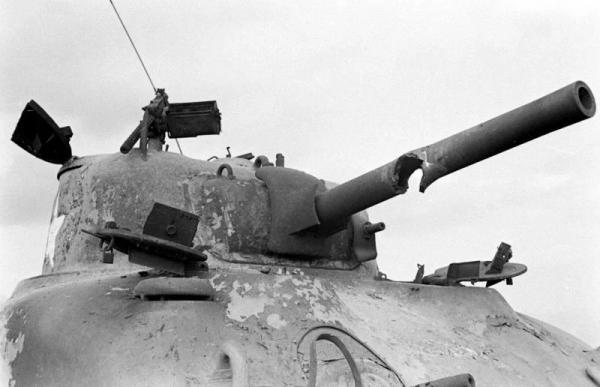
Looking at these numbers, it’s clear to see how a Tiger 1 could penetrate almost anywhere on a Sherman from 2000 m away, which often happened, while the Sherman would struggle to penetrate a Tiger even at point blank range.
However, it’s not as bad as it first seems for the Sherman. These values are against armour plate angled at 30 degrees, when firing against a vertical plate, both of these guns can penetrate a significant amount more.
In real life circumstances the Shermans M61 round could penetrate the vertical sides and rear of a Tiger from reasonable distances, even up to 750 m, but the 100 mm front plate and 120 mm gun mantlet was still completely impervious to a Shermans gun.
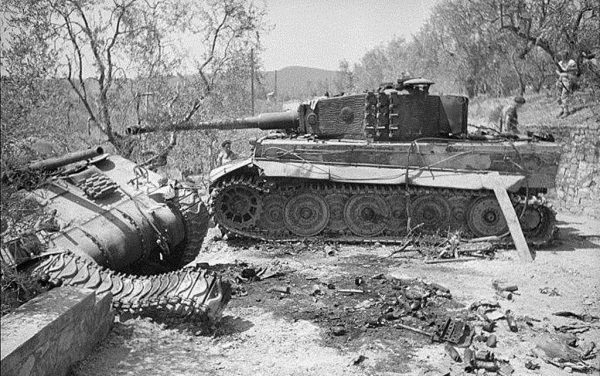
For the remainder of the war, the Tiger and its 88 mm could comfortably deal with any tanks fielded on the Western Front, and only began to struggle against later Soviet heavy tanks. Even in the last weeks of the war, against new designs like the M26 Pershing, the 1942 Tiger was still taking on the best the allies had.
Regardless of this, the 75 mm was loved by it’s crews for its high rate of fire, accuracy on the move, and good anti personnel high explosive round.
Another Article From Us: Top 6 Most Produced Tanks
You can follow us on our Facebook page too.
It proves the allies’ idea of multi purpose equipment to win a war. The Sherman was adequate in any situation it could find itself, while the Tiger was superb in the anti tank role, but was slower to reload, had slower turret traverse, and gave away its position with a huge dust cloud upon firing. This meant it could still be beaten by a Sherman with its humble 75 mm M3.
